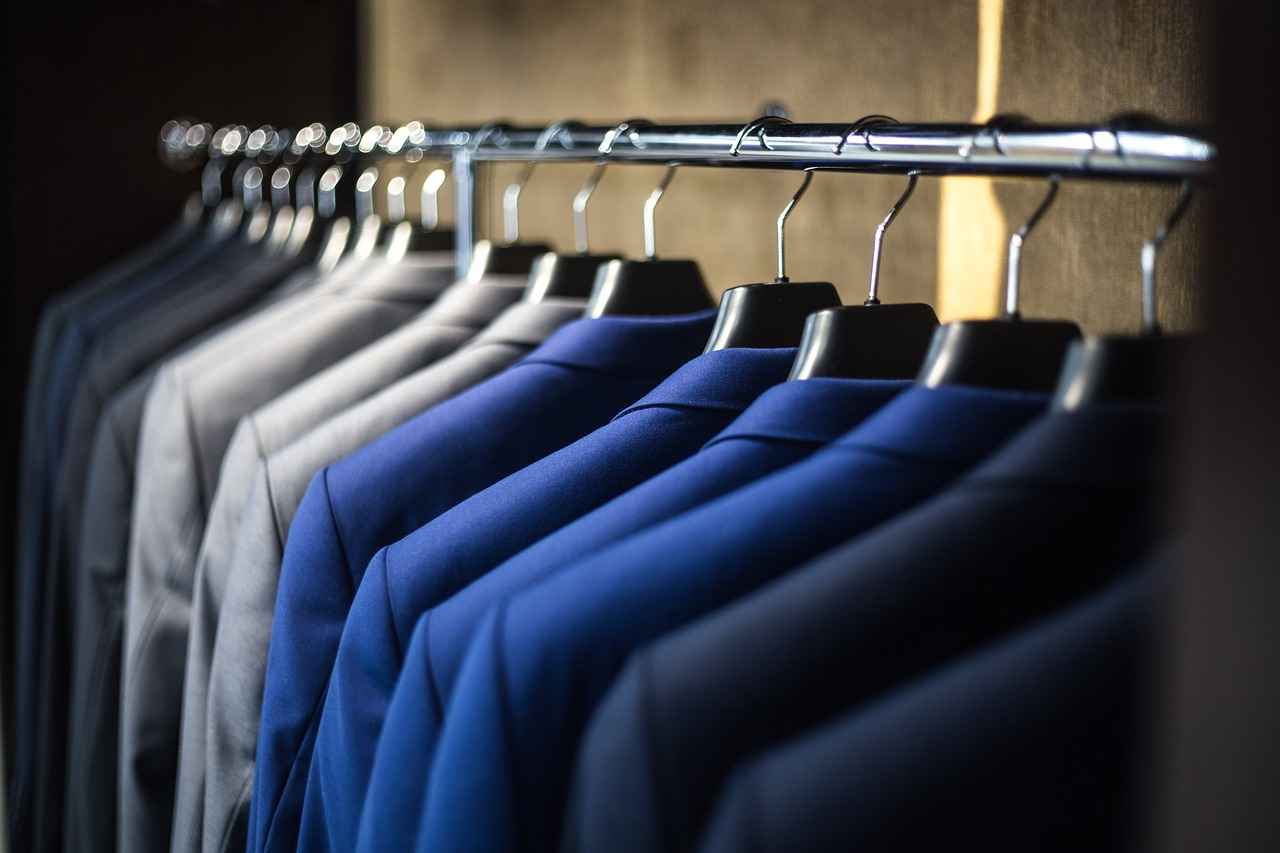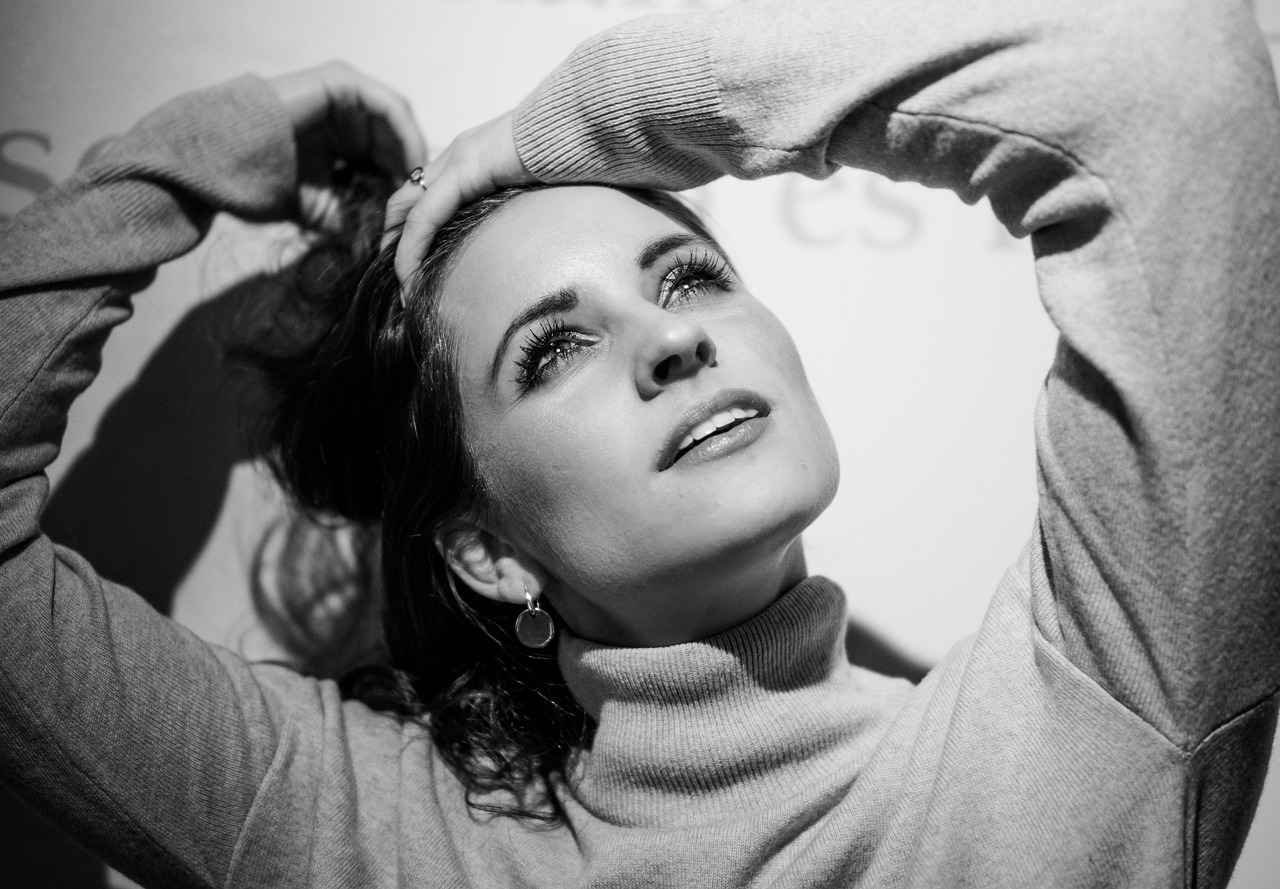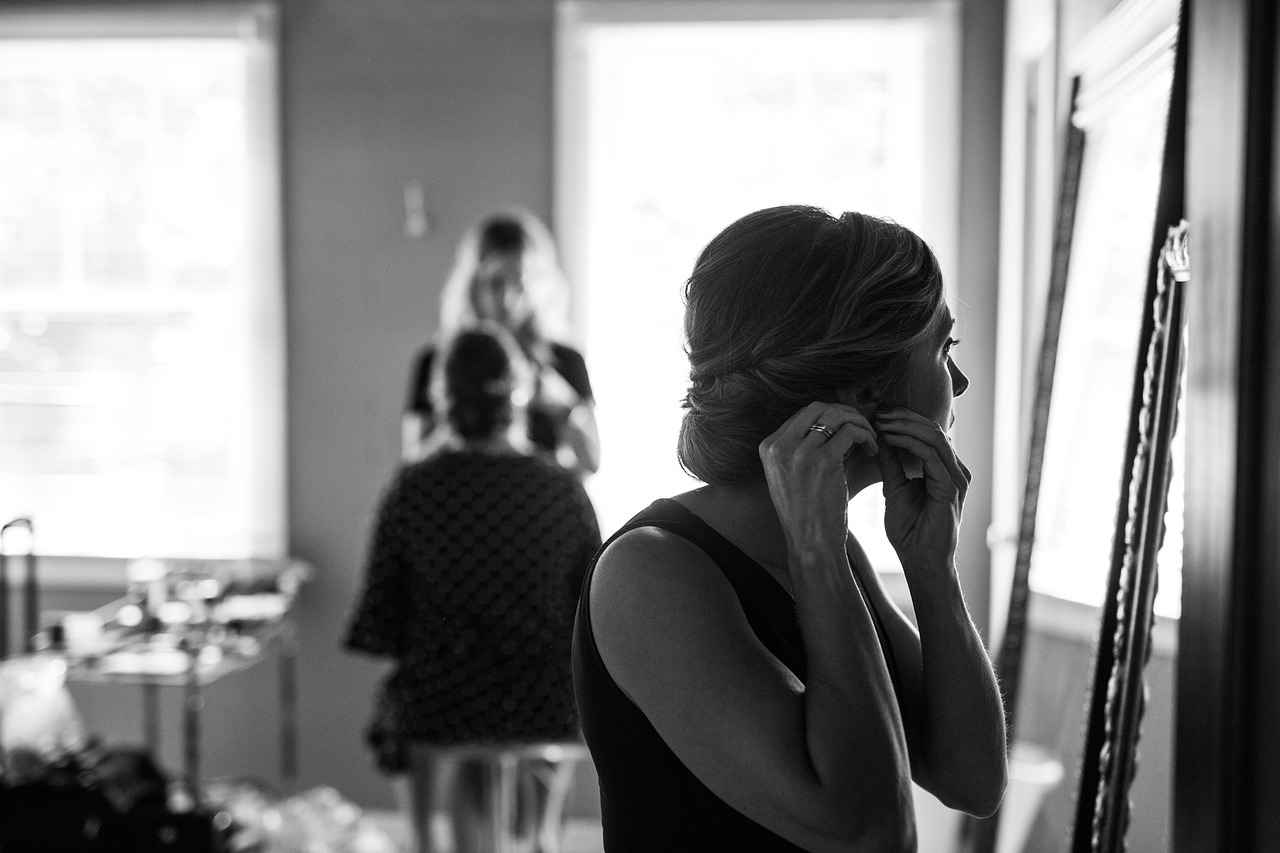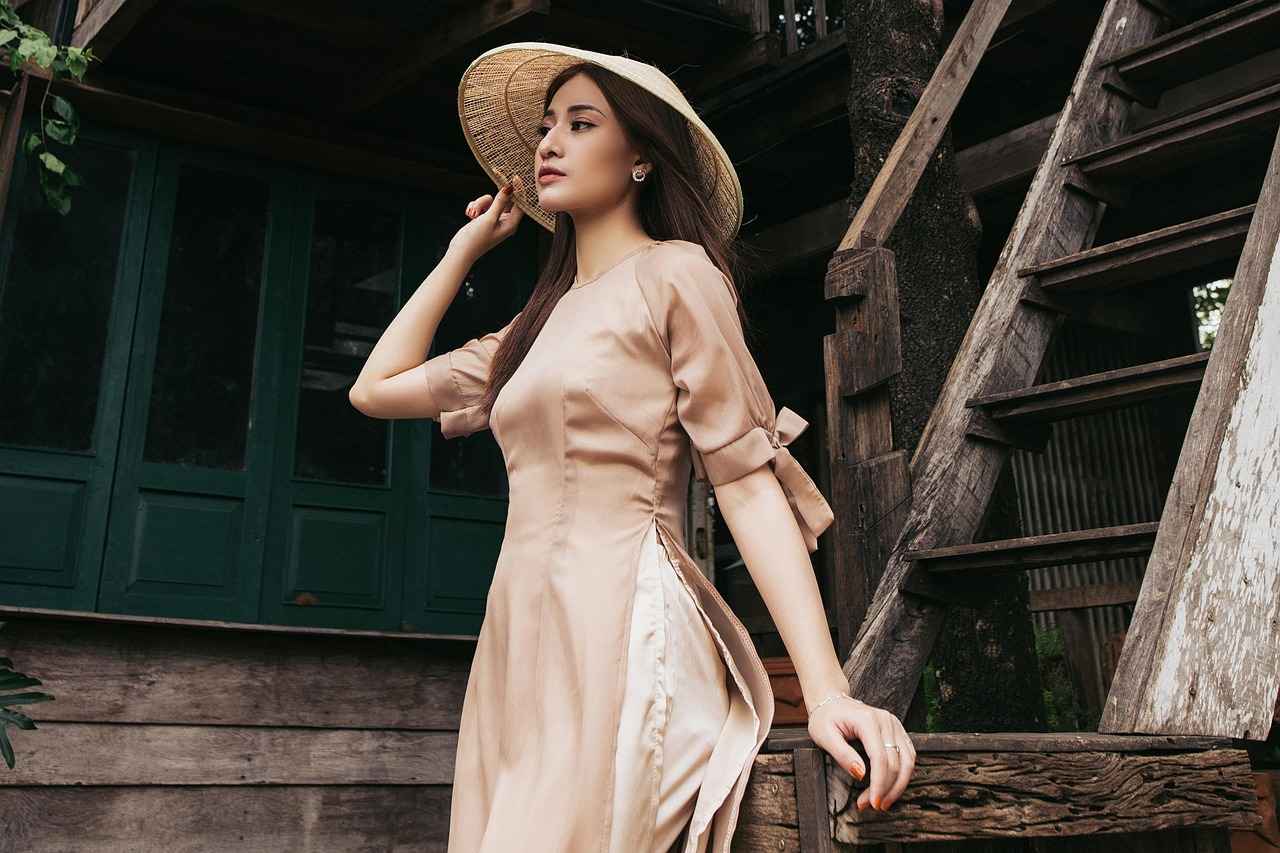This article explores the most talked-about and controversial night dress moments in celebrity culture, examining their impact on fashion, public perception, and the entertainment industry. The world of celebrity fashion is rife with moments that not only catch the eye but also spark intense discussions. From daring choices to outfits that challenge societal norms, these night dress moments have left an indelible mark on the fashion landscape.
Understanding the elements that contribute to a night dress being deemed controversial is crucial. Factors such as cultural appropriation, body image issues, and societal norms play significant roles. When a celebrity chooses to wear an outfit that defies conventional standards or appropriates cultural symbols, it can lead to public outcry and debate.
Red carpet events have seen numerous outfits that ignited fierce discussions. Here are some of the most iconic looks that divided opinions among fans and critics alike:
- Lady Gaga’s Meat Dress: At the 2010 MTV Video Music Awards, Lady Gaga donned a dress made entirely of meat. Was it a bold statement about the treatment of animals or merely a publicity stunt? This outfit raised questions about the boundaries of fashion as art.
- Rihanna’s Sheer Dress: Rihanna’s sheer gown at the CFDA Awards in 2014 was a game-changer in fashion. However, it also sparked debates about what is considered appropriate for formal events. Was it a daring fashion statement or crossing the line?
Celebrity outfits often set trends that ripple through the fashion industry. Controversial night dresses can lead to new styles and consumer choices. For instance, when a celebrity wears something avant-garde, it can inspire designers to experiment with similar themes in their collections.
Social media platforms amplify discussions around celebrity fashion choices. Platforms like Instagram and Twitter allow fans and critics to voice their opinions in real-time. This immediate feedback can significantly influence public perception of controversial night dresses.
The influence of fashion critics versus fans can shape a celebrity’s public image. Critics often have the expertise to analyze and critique fashion choices, while fans provide a more emotional response. This section examines the dynamics between these two groups in the context of night dress controversies.
Cultural appropriation is a significant concern in the fashion world. Celebrities have faced backlash for their night dress choices that cross cultural boundaries. Understanding these instances is essential to grasp the broader implications of fashion in society.
- Examples of Cultural Insensitivity in Night Dresses: Several celebrities have faced criticism for wearing culturally significant attire inappropriately. Notable examples include…
- The Impact of Celebrity Apologies on Public Perception: When celebrities face backlash, their responses can either mitigate or exacerbate the situation. Analyzing how apologies affect public perception of their controversial fashion choices is vital.
Fashion is ever-evolving, and night dresses are no exception. The styles and perceptions of appropriate evening wear have changed dramatically over the decades. From classic elegance to bold statements, the shift in fashion reflects broader societal changes.
As fashion continues to evolve, new trends are on the horizon. Speculating on what we might see in future celebrity night dress choices can provide insight into the ongoing conversation about fashion and its impact on society. Will we see more daring choices or a return to classic styles?

What Makes a Celebrity Night Dress Controversial?
In the world of celebrity fashion, night dresses often become focal points for discussion, debate, and sometimes, controversy. Understanding what makes a celebrity night dress controversial involves delving into various factors that influence public perception and societal norms. This article explores the intricate elements that contribute to the controversy surrounding these glamorous outfits.
Several factors contribute to the perception of a night dress as controversial, with cultural appropriation, body image issues, and societal norms being among the most significant. Each of these elements plays a crucial role in how audiences react to a celebrity’s choice of attire.
- Cultural Appropriation: The blending of cultural elements in fashion can lead to accusations of cultural appropriation, where a celebrity may wear attire that is significant to a particular culture without understanding its context or meaning. This often results in backlash and calls for greater cultural sensitivity.
- Body Image Issues: Celebrities often set trends that impact societal views on body image. When a celebrity wears a dress that emphasizes certain body types or challenges traditional beauty standards, it can spark discussions about body positivity and acceptance. Critics may argue whether such choices promote healthy body image or perpetuate unrealistic standards.
- Societal Norms: Fashion is heavily influenced by societal expectations. A night dress that defies conventional norms—be it through its style, color, or cut—can provoke strong reactions. For instance, a dress that is deemed too revealing for a formal event can lead to debates about what is considered appropriate attire.
These factors are not isolated; they often intersect and amplify each other. For example, a celebrity’s choice to wear a dress that culturally appropriates elements from another culture may also challenge societal norms regarding modesty and body image.
Moreover, the rise of social media has transformed how these controversies are discussed. Platforms like Instagram and Twitter allow fans and critics alike to voice their opinions instantly, leading to a rapid spread of both support and criticism. This immediate feedback loop can significantly impact a celebrity’s public image and career.
For instance, when a celebrity wears a controversial night dress, the ensuing discussions can lead to broader conversations about the fashion industry’s responsibility in promoting inclusivity and respect for cultural heritage. As a result, many celebrities have begun to engage in dialogues about their fashion choices, often seeking to educate their audiences on the meanings behind their outfits.
In conclusion, understanding what makes a celebrity night dress controversial requires a nuanced examination of cultural appropriation, body image issues, and societal norms. These factors not only shape public perception but also influence the evolving landscape of fashion. As celebrities continue to push boundaries with their fashion choices, it is essential for both the industry and consumers to engage in thoughtful discussions about the implications of these decisions.

Iconic Red Carpet Looks That Sparked Debate
When it comes to red carpet events, the outfits worn by celebrities often become the talk of the town. These glamorous occasions not only showcase fashion but also reveal the complex relationship between style, culture, and societal expectations. This section delves into some of the most iconic red carpet looks that sparked intense debates, highlighting how these choices divided opinions among fans and critics alike.
- Lady Gaga’s Meat Dress: A Bold Statement or a Stunt?
At the 2010 MTV Video Music Awards, Lady Gaga made headlines with her infamous meat dress. This provocative outfit raised questions about the boundaries of fashion and art. Was it a genuine statement on the meat industry, or merely a publicity stunt? The discussion around this dress illuminated the fine line between artistic expression and shock value.
- Rihanna’s Sheer Dress: Fashion Forward or Inappropriate?
Rihanna’s sheer gown at the 2014 CFDA Awards was a game-changer in the realm of formal wear. While many praised her for pushing fashion boundaries, others criticized the outfit as inappropriate for the occasion. This duality in perception underscores the evolving standards of formal attire and the ongoing debate about body positivity in fashion.
- Kim Kardashian’s Met Gala Look: Art or Excess?
Kim Kardashian’s look at the 2019 Met Gala, where she donned a skin-tight, dripping wet dress, sparked fierce discussions. Some hailed it as a daring fashion statement, while others viewed it as excessive. This event showcased how celebrity fashion can provoke strong reactions, reflecting broader societal views on beauty and body image.
- Beyoncé’s 2016 VMA Dress: Empowerment or Controversy?
Beyoncé’s stunning attire at the 2016 MTV Video Music Awards, adorned with nods to her cultural heritage, ignited conversations about empowerment in fashion. While many celebrated her boldness, critics argued that the outfit could be seen as divisive. This instance exemplifies how celebrity fashion choices can resonate on multiple levels.
- Jared Leto’s Floral Ensemble: A Question of Masculinity?
Jared Leto’s floral ensemble at the 2019 Met Gala challenged traditional notions of masculinity in fashion. While some appreciated his daring approach, others were left questioning whether such choices were appropriate for male celebrities. This outfit opened the door for discussions about gender norms in fashion.
The outfits worn at red carpet events not only reflect individual style but also serve as a mirror to societal values and norms. The iconic looks that spark debate often highlight the tensions between tradition and modernity, pushing the boundaries of what is deemed acceptable in fashion. As we continue to witness these remarkable moments, it becomes clear that celebrity fashion is more than just clothing; it is a powerful form of expression that can challenge, inspire, and provoke.
Lady Gaga’s Meat Dress: A Statement or a Stunt?
Lady Gaga’s infamous meat dress, showcased at the 2010 MTV Video Music Awards, continues to elicit strong reactions and discussions about the intersection of fashion and art. This daring outfit, crafted entirely from raw meat, was not just a fashion statement; it was a provocative commentary on the meat industry and the treatment of animals. But was it a bold statement or merely a publicity stunt?
To understand the impact of the meat dress, we must consider the context in which it was presented. Lady Gaga, known for her eccentric style and boundary-pushing performances, wore the dress while accepting the award for Best Video. This choice was not made lightly; it was a calculated move designed to provoke thought and discussion. The dress itself was a statement against the meat industry and the societal norms surrounding fashion, beauty, and body image.
Many critics argued that the meat dress was a disgusting display that trivialized serious issues such as animal rights and environmental concerns. Others saw it as a powerful form of artistic expression that challenged conventional notions of beauty and fashion. The controversy surrounding the dress sparked debates about the role of fashion in societal discourse. Is fashion merely a means of self-expression, or can it serve as a catalyst for important conversations?
In the aftermath of the event, the meat dress became a cultural phenomenon. Social media exploded with reactions, both positive and negative, as people shared their thoughts and opinions. This instant feedback loop highlighted the significant role that social media plays in shaping public perception of celebrity fashion choices. The dress was not just a garment; it became a symbol of Lady Gaga’s artistic vision and a reflection of broader societal issues.
Moreover, the meat dress raised questions about the sustainability of fashion and the ethical implications of using animal products in clothing. As the fashion industry grapples with its environmental impact, Lady Gaga’s choice serves as a stark reminder of the conversations that need to be had regarding sustainability and ethical fashion practices.
In conclusion, Lady Gaga’s meat dress at the 2010 MTV Video Music Awards was far more than a mere publicity stunt. It was a bold statement that challenged societal norms and sparked critical discussions about fashion, art, and ethics. Whether one views it as a piece of art or a controversial statement, it undoubtedly left an indelible mark on the fashion landscape and continues to influence discussions about celebrity culture and responsibility.
Rihanna’s Sheer Dress: Fashion Forward or Inappropriate?
Rihanna’s sheer gown at the CFDA Awards in 2014 undoubtedly marked a pivotal moment in the fashion landscape. The dress, designed by Adam Selman, was a stunning display of both artistry and boldness, featuring intricate beading that left little to the imagination. While many praised Rihanna for her audacious choice, it also ignited a heated debate about the boundaries of fashion and the appropriateness of attire at formal events.
The controversy surrounding Rihanna’s gown stems from several factors. First and foremost, the sheer nature of the dress challenged conventional norms of formal wear. Traditionally, evening gowns are expected to exude elegance and modesty, but Rihanna’s choice flipped this expectation on its head. Critics argued that such revealing attire was inappropriate for a prestigious event, while supporters hailed it as a bold statement of body positivity and self-expression.
Social media played a crucial role in shaping the public’s reaction to Rihanna’s dress. Many fans took to platforms like Twitter and Instagram to express their admiration, celebrating her confidence and willingness to push boundaries. However, others voiced their disapproval, arguing that the outfit was too risqué for a formal occasion. This division highlights the evolving perceptions of fashion and what is deemed acceptable in public spaces.
Rihanna’s sheer gown has had a lasting impact on fashion trends, inspiring designers and celebrities alike to embrace bolder and more daring choices. Following the CFDA Awards, many other stars began to experiment with sheer fabrics and revealing silhouettes, signaling a shift towards more provocative evening wear. This trend reflects a broader cultural movement towards body positivity, where individuals are encouraged to embrace their bodies and express themselves through fashion.
The fashion industry has responded to this shift by showcasing collections that feature sheer elements and bold designs. Designers are increasingly incorporating transparency and daring cuts into their lines, catering to a growing audience that seeks to challenge traditional fashion norms. Rihanna’s influence is evident in runway shows and red carpet events, where sheer gowns and outfits that celebrate the human form have become more commonplace.
Rihanna’s choice at the CFDA Awards exemplifies how celebrities can influence societal norms surrounding fashion. As public figures, celebrities often serve as trendsetters, and their choices can inspire fans to adopt similar styles. This phenomenon raises questions about the responsibility of celebrities in shaping public perceptions of fashion and appropriateness.
Rihanna’s sheer gown at the CFDA Awards was more than just a dress; it was a bold declaration of personal style that sparked a larger conversation about fashion, body image, and societal norms. As the lines between appropriate and inappropriate continue to blur, it is clear that the fashion landscape is evolving. The impact of such moments extends beyond the red carpet, influencing designers, consumers, and the very fabric of fashion itself.

How Celebrity Night Dresses Influence Fashion Trends
Celebrity culture has a profound impact on the fashion industry, particularly when it comes to night dresses. How do these outfits influence trends? This question is at the heart of our exploration into the intricate relationship between celebrity fashion choices, consumer behavior, and the evolving landscape of design.
When a celebrity steps onto the red carpet in a striking night dress, it often sends ripples through the fashion world. Designers watch closely, eager to capture the essence of what makes an outfit resonate with the public. But what elements contribute to this phenomenon? Here are several key factors:
- Visibility: The sheer visibility of celebrities allows their fashion choices to be seen by millions, creating immediate buzz.
- Social Media Influence: Platforms like Instagram and TikTok amplify discussions around these outfits, enabling rapid dissemination of trends.
- Public Perception: How the public perceives a particular look can dictate its popularity; a controversial outfit may spark debate but also intrigue.
Controversial night dresses often become talking points that elevate a celebrity’s status. For instance, consider Lady Gaga’s meat dress, which was both shocking and thought-provoking. Such outfits challenge societal norms and push the boundaries of fashion. They compel designers to think outside the box and often lead to a surge in similar styles, as consumers seek to emulate the boldness of their favorite stars.
Another example is Rihanna’s sheer dress at the CFDA Awards. While it garnered admiration for its audacity, it also raised questions about appropriateness in formal settings. This duality of admiration and critique is what makes celebrity outfits so compelling.
Designers are not just passive observers; they actively respond to the trends set by celebrities. When a celebrity dons a particular style, designers often rush to create their interpretations. How do they ensure their designs remain relevant? Here are a few strategies:
- Trend Forecasting: Designers invest in research to predict upcoming trends, allowing them to align their collections with celebrity styles.
- Collaboration: Many designers collaborate with celebrities for exclusive lines, ensuring they capture the essence of what makes a night dress iconic.
- Feedback Loops: Designers pay attention to consumer reactions, adjusting their designs based on what resonates with the public.
Social media has revolutionized how we perceive and engage with fashion. Platforms such as Instagram and Twitter not only allow fans to express their opinions but also enable celebrities to gauge public sentiment in real time. How does this affect the fashion industry? The implications are significant:
- Instant Feedback: Celebrities receive immediate reactions to their outfits, influencing their future choices.
- Viral Trends: A single post can lead to a trend going viral, prompting designers to capitalize on the moment.
- Engagement with Fans: Celebrities often interact with their followers, creating a sense of community around their fashion choices.
In conclusion, the relationship between celebrity night dresses and fashion trends is a dynamic interplay of visibility, controversy, and social media influence. As celebrities continue to redefine evening wear, the fashion industry remains in a constant state of evolution, eagerly responding to the bold choices made on red carpets around the world.
The Role of Social Media in Shaping Perceptions
In today’s digital age, social media platforms have become pivotal in shaping public perceptions of celebrity fashion choices. As influencers and stars share their night dress moments on platforms like Instagram and Twitter, the discussions surrounding these choices intensify. This article delves into the significant role that social media plays in amplifying public opinion, particularly regarding controversial night dresses.
Social media serves as a dynamic space for fans and critics alike to voice their opinions. The immediacy of platforms like Twitter allows users to react in real-time to red carpet events, while Instagram provides a visual showcase for celebrities’ outfits. This duality fosters a vibrant dialogue around fashion, where every post can spark a myriad of responses.
One of the most compelling aspects of social media is the ability for users to provide instant feedback. When a celebrity dons a controversial night dress, the reactions can be swift and varied. For instance, a single tweet can ignite a trending topic, leading to widespread discussions about the implications of the outfit. This rapid exchange of opinions can either elevate a celebrity’s status or lead to significant backlash.
When a night dress goes viral, it often sets off a ripple effect throughout the fashion industry. Designers and brands closely monitor social media trends to gauge what resonates with the public. If a controversial dress garners positive attention, it can inspire similar designs in upcoming collections. Conversely, negative feedback may lead designers to rethink their approach, highlighting the power of public opinion in shaping fashion trends.
Celebrity endorsements play a crucial role in how fashion is perceived. When a well-known figure wears a night dress that challenges societal norms, their influence can shift public opinion. For example, a bold choice may be embraced by fans who see it as a form of self-expression, while others may criticize it as inappropriate. This dichotomy illustrates how celebrity influence can either validate or challenge the status quo in fashion.
The debate between fashion critics and social media users is ongoing. Critics often provide in-depth analysis and insights based on industry standards, while social media users offer a more grassroots perspective. In many cases, the combined voices of both groups shape the narrative surrounding a celebrity’s choice in night dresses. This section explores the dynamics between these two influential groups and how they impact a celebrity’s public image.
For brands associated with celebrities, a controversial night dress moment can have lasting effects. Positive reception can enhance a brand’s image, while negative backlash may tarnish it. Brands must navigate this landscape carefully, as they are often scrutinized for their association with specific celebrities. The interplay between celebrity fashion and brand perception is a crucial consideration for marketers in the fashion industry.
Many brands and celebrities have learned to leverage controversy to spark engagement. By embracing bold fashion choices and inviting conversations around them, they can create a buzz that translates into increased visibility and sales. This strategy highlights the transformative power of social media in turning controversial moments into marketing opportunities.
In conclusion, social media platforms are more than just channels for sharing fashion moments; they are vital arenas where public opinion is formed and reshaped. As celebrities continue to push boundaries with their night dress choices, the discussions ignited on social media will undoubtedly play a crucial role in defining the future of fashion.
Fashion Critics vs. Fans: Who Holds More Power?
In the world of celebrity fashion, the debate between fashion critics and fans is more than just a clash of opinions; it is a dynamic interplay that can significantly shape a celebrity’s public image. This section delves into the intricate relationships between these two influential groups, particularly in the context of controversial night dress choices.
Fashion critics, often comprising industry professionals, journalists, and seasoned fashion enthusiasts, possess the expertise to analyze and critique celebrity outfits from various angles. Their insights are typically grounded in established fashion principles, historical context, and cultural significance. Critics can elevate a celebrity’s status through positive reviews or diminish it through harsh critiques. For instance, when a celebrity wears a gown that challenges traditional norms, critics may either celebrate the boldness or label it as a fashion faux pas, influencing public perception significantly.
Conversely, fans represent a more emotional and personal connection to celebrities. Their opinions are often rooted in admiration and loyalty, which can lead to passionate defenses of their favorite stars. In many cases, fans take to social media platforms to express their views, creating a powerful echo chamber that can amplify or drown out critical voices. A celebrity may don a controversial outfit, and while critics may decry it, fans may rally around their idol, celebrating their individuality and creativity. This dichotomy illustrates how fan support can sometimes outweigh critical disapproval, ultimately shaping a celebrity’s public narrative.
In today’s digital age, social media plays a crucial role in amplifying both critics’ and fans’ voices. Platforms like Instagram and Twitter allow for immediate feedback on celebrity fashion choices, enabling fans to share their thoughts widely. A single tweet or Instagram post can go viral, swaying public opinion almost overnight. This democratization of commentary means that celebrities must navigate a complex landscape where both critics and fans can impact their reputation.
- Lady Gaga’s Meat Dress: Initially met with criticism from fashion experts, Gaga’s outfit became a symbol of artistic expression for her fans.
- Rihanna’s Sheer Gown: While critics debated its appropriateness, fans praised Rihanna for her daring fashion choice, showcasing the divide in public opinion.
Despite their differences, fashion critics and fans can sometimes find common ground. A well-received outfit may lead to a consensus, where critics and fans alike celebrate a celebrity’s fashion choice. However, in instances of controversy, the dialogue can become polarized, with each group firmly entrenched in their views. This polarization can lead to heated discussions, further solidifying the celebrity’s image as either a fashion icon or a misstep.
The interplay between fashion critics and fans is a vital aspect of celebrity culture, particularly regarding night dress controversies. As each group wields its influence, the outcome can significantly affect a celebrity’s public image. Understanding this dynamic is essential for anyone interested in the evolving landscape of fashion and celebrity influence.

Cultural Appropriation in Celebrity Fashion Choices
Cultural appropriation is a complex and often controversial topic in the fashion industry, particularly when it comes to celebrity fashion choices. This section delves into the instances where celebrities have faced backlash for their night dress selections that have crossed cultural boundaries, raising important questions about respect, representation, and responsibility.
Cultural appropriation refers to the act of taking or borrowing elements from one culture by members of another culture, often without permission or understanding. In the realm of fashion, this can manifest through the adoption of traditional garments, symbols, or styles in a way that can be seen as disrespectful or exploitative. This issue becomes especially pronounced in celebrity fashion, where high visibility can lead to widespread scrutiny.
- Katy Perry’s Geisha-Inspired Dress: At the 2013 American Music Awards, Katy Perry faced criticism for her outfit inspired by Japanese culture, which many viewed as reducing a rich cultural heritage to mere costume.
- Selena Gomez’s Bindi: In 2013, Selena Gomez wore a bindi during a performance, prompting backlash from many who felt that she misrepresented a sacred symbol in Hindu culture.
- Kim Kardashian’s Cornrows: Kim Kardashian sparked debate when she wore her hair in cornrows, a style deeply rooted in African culture, leading to discussions about cultural ownership and appreciation versus appropriation.
The backlash often stems from a perceived lack of understanding or respect for the cultural significance of certain garments or styles. Critics argue that when celebrities wear these items without acknowledging their origins, it can trivialize the culture and its history. Additionally, the visibility of celebrities amplifies the impact of their choices, making it essential for them to be mindful of the messages they convey.
Social media platforms have become powerful tools for raising awareness about cultural appropriation. Users can quickly share their opinions, leading to viral discussions that can significantly impact public perception. For instance, hashtags like #CulturalAppropriation often trend when a celebrity’s outfit sparks controversy, highlighting collective concerns and fostering dialogue about cultural sensitivity.
When faced with backlash, celebrities often issue apologies. However, the effectiveness of these apologies varies. A well-crafted apology that acknowledges the mistake and expresses a desire to learn can help repair a celebrity’s image. Conversely, a dismissive or insincere response can exacerbate the situation, leading to further criticism. The public’s reaction to these apologies can significantly influence how the celebrity is perceived moving forward.
It is crucial to differentiate between cultural appreciation and appropriation. While it is possible to celebrate and honor different cultures through fashion, it requires a deep understanding and respect for those cultures. Engaging with cultural elements in a thoughtful manner—such as collaborating with designers from the culture being represented—can promote positive exchange rather than appropriation.
As the conversation around cultural appropriation in fashion continues to evolve, it is essential for celebrities to engage with cultural elements responsibly. By fostering an environment of respect and understanding, the fashion world can embrace diversity while avoiding the pitfalls of appropriation. As consumers, we also play a role in holding celebrities accountable and encouraging a more inclusive fashion landscape.
Examples of Cultural Insensitivity in Night Dresses
In recent years, the intersection of fashion and culture has become a hotly debated topic, especially as celebrities often find themselves at the center of cultural appropriation controversies. This subheading delves into notable instances where celebrities have faced backlash for wearing culturally significant attire inappropriately, igniting conversations about respect, representation, and responsibility in fashion.
Cultural appropriation occurs when elements of one culture are used by members of another culture, often without permission or understanding of their significance. In the fashion world, this can manifest in various ways, particularly during high-profile events where celebrities showcase their outfits on global platforms.
- Katy Perry’s Geisha-Inspired Dress: At the 2013 American Music Awards, Katy Perry donned a dress that drew inspiration from traditional Japanese attire. The outfit was widely criticized for reducing a rich culture to a mere costume, prompting discussions about the need for cultural sensitivity.
- Selena Gomez’s Bindi: During her 2013 performance at the MTV Video Music Awards, Selena Gomez wore a bindi, a symbol of spirituality in Hindu culture. This choice was met with backlash, as many felt it trivialized an important cultural symbol for the sake of fashion.
- Kim Kardashian’s Cornrows: In 2016, Kim Kardashian faced criticism for wearing her hair in cornrows, a style deeply rooted in African culture. Critics argued that her choice perpetuated cultural appropriation, especially given the historical context surrounding black hairstyles.
- Madonna’s “Like a Prayer” Video: Madonna’s 1989 music video featured imagery that many viewed as disrespectful to Catholicism and African American culture. The backlash was significant, leading to widespread discussions about the boundaries of artistic expression.
Each of these examples has sparked conversations not only about the outfits themselves but also about the broader implications of cultural appropriation in celebrity fashion. Critics argue that celebrities, due to their influence, have a responsibility to educate themselves about the cultures they draw inspiration from. This raises important questions: How can celebrities be more mindful in their fashion choices? What role does the fashion industry play in promoting cultural sensitivity?
Social media platforms have amplified discussions surrounding these controversial fashion choices. Hashtags like #CulturalAppropriation trend frequently, allowing users to voice their opinions and share educational resources. This phenomenon has transformed how celebrities respond to criticism, as they often find themselves under scrutiny in real-time.
As the dialogue around cultural appropriation continues to evolve, many celebrities are beginning to acknowledge the importance of cultural sensitivity. Some have publicly apologized for their past fashion choices, while others are collaborating with designers from diverse backgrounds to create more respectful representations of culture in their attire.
In conclusion, the fashion choices of celebrities carry significant weight in shaping public perception and cultural understanding. By recognizing the importance of cultural significance in attire, celebrities can contribute to a more inclusive and respectful fashion landscape.
The Impact of Celebrity Apologies on Public Perception
In the world of celebrity culture, the way public figures respond to criticism can significantly influence their image and the perceptions of their fashion choices. When celebrities face backlash, their reactions—especially apologies—can either soothe the situation or intensify the scrutiny they receive. This article explores the intricate dynamics of celebrity apologies, examining how they impact public perception of controversial fashion choices.
Apologies in the celebrity realm often serve as a crucial tool for damage control. When a celebrity dons a controversial outfit, whether it’s deemed inappropriate or culturally insensitive, their response can determine how the public perceives the situation. A well-crafted apology can demonstrate accountability and a willingness to learn, while a dismissive or insincere response can lead to further backlash.
The effectiveness of an apology hinges on several factors, including timing, sincerity, and the celebrity’s previous behavior. For instance, if a celebrity acknowledges their mistake promptly and expresses genuine remorse, they are more likely to regain public favor. On the contrary, delayed or half-hearted apologies can exacerbate the controversy, leading to a prolonged negative perception.
- Rihanna’s Response to Criticism: After facing backlash for her sheer dress at the CFDA Awards, Rihanna took to social media to address the criticism head-on. She expressed her intention to challenge norms and received mixed reactions, but her candidness helped mitigate some of the negative sentiments.
- Katy Perry’s Cultural Appropriation Apology: Katy Perry faced significant backlash for a geisha-inspired outfit. Her subsequent apology, where she acknowledged the cultural insensitivity, showcased her willingness to learn and adapt, ultimately softening public opinion.
In today’s digital age, social media acts as a double-edged sword for celebrities. On one hand, it provides a platform for immediate communication, allowing them to address controversies swiftly. On the other hand, it can amplify negative sentiments, making it crucial for celebrities to navigate these waters carefully. A heartfelt apology shared on platforms like Instagram can resonate with fans, while a poorly received one can lead to viral criticism.
Fans often expect celebrities to take responsibility for their actions. Acknowledging mistakes and showing a commitment to change can foster a sense of trust between the celebrity and their audience. However, the expectations can vary significantly based on the celebrity’s previous behavior and the nature of the controversy. For example, a celebrity with a history of insensitivity may find it challenging to regain public trust, regardless of their apology.
The aftermath of a celebrity’s apology can have lasting implications on their career and public image. Successfully navigating a controversy can lead to a redemption arc, where the celebrity emerges stronger and more relatable. Conversely, failing to address the backlash appropriately can result in a tarnished reputation and, in some cases, a decline in career opportunities.
In conclusion, the impact of celebrity apologies on public perception is profound and multifaceted. As society continues to evolve, the expectations for accountability in fashion choices will likely grow. Celebrities who embrace this responsibility and communicate effectively with their audience may find themselves better positioned to navigate the complexities of public opinion.

The Evolution of Night Dress Trends Over the Years
Fashion is a dynamic entity, constantly reshaping itself to reflect societal changes, cultural influences, and individual expressions. One of the most captivating aspects of this evolution is the night dress, a staple in evening wear that has undergone significant transformations over the decades. This section delves into how styles and perceptions of appropriate evening wear have changed, revealing the intricate relationship between fashion and societal norms.
From the elegant silhouettes of the 1920s to the daring designs of the present day, night dresses have mirrored the zeitgeist of their times. The 1920s flapper dresses epitomized freedom and rebellion, challenging the restrictive norms of previous eras. These dresses featured dropped waists and loose fits, allowing women to dance and move freely, symbolizing a newfound liberation.
As we moved into the 1950s, evening wear took on a more structured and sophisticated form. The hourglass silhouette became popular, with cinched waists and full skirts, inspired by icons like Audrey Hepburn and Grace Kelly. This era celebrated femininity and elegance, contrasting sharply with the more relaxed styles of the previous decade.
The 1970s marked a significant turning point in night dress fashion, as the rise of the counterculture movement encouraged self-expression and experimentation. This era saw the introduction of bohemian styles, with flowing fabrics, bold patterns, and an array of colors. Evening wear became a canvas for personal style, reflecting the wearer’s individuality rather than conforming to societal expectations.
By the 1990s, night dresses began to embrace a more minimalist aesthetic. Designers like Calvin Klein popularized simple lines and understated elegance, moving away from the extravagance of the past. However, this minimalism was often juxtaposed with daring elements, such as sheer fabrics and asymmetrical cuts, paving the way for the bold statements we see today.
In recent years, the influence of celebrity culture has become paramount in shaping night dress trends. Celebrities often take risks on the red carpet, pushing the boundaries of what is considered appropriate evening wear. For instance, Rihanna’s sheer dress at the CFDA Awards in 2014 not only made headlines but also sparked a broader conversation about body image and the evolution of formal wear. Such moments challenge traditional notions of modesty and encourage a more inclusive definition of beauty.
As we look to the future, the evolution of night dresses shows no signs of slowing down. The growing emphasis on sustainability and ethical fashion is likely to influence upcoming trends. Designers are increasingly focusing on creating pieces that are not only stylish but also environmentally conscious. This shift may lead to a resurgence of vintage-inspired designs, as consumers seek unique, timeless pieces that tell a story.
Moreover, the rise of digital fashion and virtual events may redefine the concept of evening wear altogether. With more events being held online, the traditional night dress may evolve into something entirely new, blending comfort with style in unprecedented ways.
In conclusion, the journey of night dresses through the decades reflects broader societal changes, individual expressions, and the ever-evolving nature of fashion. As we continue to navigate these shifts, it is clear that night dresses will remain a fascinating subject of discussion and innovation in the world of fashion.
From Classic Elegance to Bold Statements
The world of fashion is in a constant state of flux, with evening wear evolving dramatically over the years. The shift from traditional evening attire to more daring and innovative outfits mirrors significant societal changes. This transformation is not just about aesthetics; it reflects evolving attitudes towards self-expression, gender norms, and cultural influences.
Several factors have contributed to the transition from classic elegance to bold statements in evening wear:
- Changing Gender Roles: As society embraces fluidity in gender identity, evening wear has followed suit, allowing for more experimental styles.
- Cultural Influences: Globalization has introduced a myriad of styles, encouraging designers and celebrities to draw inspiration from various cultures.
- Celebrity Influence: Celebrities often serve as trendsetters, pushing the envelope on what is considered acceptable for evening wear.
Many celebrities have embraced this evolution, opting for outfits that challenge traditional norms. For example, Lady Gaga has consistently made headlines with her avant-garde choices, such as her infamous meat dress at the 2010 MTV Video Music Awards. This bold statement not only sparked conversations about fashion as art but also highlighted the role of celebrity culture in shaping fashion narratives.
Similarly, Rihanna’s sheer gown at the 2014 CFDA Awards broke barriers, showcasing the power of transparency in evening wear. While some praised her for her daring choice, others raised questions about appropriateness at formal events. This divide illustrates how celebrity choices can polarize public opinion.
Social media platforms like Instagram and Twitter have amplified discussions around evening wear, allowing fans and critics alike to voice their opinions instantly. The rapid dissemination of images fosters a culture where outfits can be dissected and debated in real-time. This immediacy can either bolster a celebrity’s image or lead to backlash, depending on public reception.
While bold fashion statements can elevate a celebrity’s status, they also come with risks. Instances of cultural appropriation have sparked significant backlash, particularly when celebrities wear attire that holds cultural significance without understanding its context. For example, when celebrities wear traditional garments as mere fashion statements, it can lead to accusations of insensitivity.
The dynamic between fashion critics and fans plays a crucial role in shaping a celebrity’s public image. Critics often provide a more analytical perspective, while fans may offer emotional responses. This interplay can either validate or challenge the choices made by celebrities, influencing future trends in evening wear.
As we look to the future, it is clear that the evolution of evening wear will continue. With ongoing discussions surrounding body positivity, gender fluidity, and sustainability, we can anticipate a new wave of trends that prioritize inclusivity and innovation. The next generation of celebrities will likely push boundaries even further, creating a landscape where evening wear becomes a canvas for personal expression.
In conclusion, the evolution from classic elegance to bold statements in evening wear is a reflection of broader societal changes. As we witness this transformation, it is essential to understand the factors driving these shifts and the implications they hold for the future of fashion.
Future Trends: What’s Next for Night Dresses?
As we look towards the future of fashion, the realm of celebrity night dresses is poised for exciting transformations. The ever-evolving landscape of style is influenced by various factors, including cultural shifts, technological advancements, and changing societal norms. This section delves into the anticipated trends in celebrity night dresses and the potential controversies they may spark.
With increasing awareness of environmental issues, sustainability is becoming a crucial consideration in fashion. Will we see celebrities embracing eco-friendly materials and ethical fashion practices in their night dress selections? Many designers are already experimenting with biodegradable fabrics and upcycled materials, paving the way for a more sustainable approach to evening wear.
The integration of technology into fashion is set to revolutionize night dresses. Will we witness the rise of smart fabrics that change color or pattern based on the wearer’s mood or environment? Innovations like 3D printing and wearable tech could lead to unique designs that challenge traditional notions of evening wear, offering new avenues for self-expression.
The conversation around gender fluidity in fashion is gaining momentum. How will this shift impact celebrity night dresses? Expect to see a blurring of lines between traditionally masculine and feminine styles, with celebrities opting for outfits that defy conventional gender norms. This could lead to a broader acceptance of diverse expressions of identity on the red carpet.
As globalization continues to shape our world, cultural influences in fashion will likely become more pronounced. Celebrities may draw inspiration from various cultures, leading to stunning and innovative designs. However, this raises questions about cultural appropriation and the responsibility that comes with it. Will we see a more conscientious approach to cultural elements in night dresses?
As seen in the past, celebrities often use their platform to make bold statements through fashion. Will future night dresses continue this trend of controversy? Outfits that challenge societal norms or address pressing issues may provoke discussions, both positive and negative. The potential for backlash will remain a constant as celebrities navigate the fine line between artistic expression and public perception.
Social media platforms are powerful tools that amplify celebrity fashion choices. Will influencers and online communities dictate what is considered stylish? The rapid spread of trends through platforms like Instagram and TikTok can create a cycle of instant feedback and pressure, pushing celebrities to adapt quickly to meet audience expectations.
We are likely to see more collaborations between celebrities and fashion designers, leading to exclusive collections that reflect contemporary trends. Will these partnerships redefine the concept of night dresses? By merging celebrity influence with designer creativity, we may witness unique pieces that resonate with a broader audience, challenging traditional fashion hierarchies.
In conclusion, the future of celebrity night dresses is filled with possibilities. As fashion continues to evolve, we can expect to see a blend of sustainability, technology, and cultural influences that not only redefine style but also spark meaningful conversations. The potential for controversy will remain, as celebrities navigate their roles as fashion icons in an increasingly complex world.
Frequently Asked Questions
- What makes a celebrity night dress controversial?
Controversial night dresses often stem from factors like cultural appropriation, body image issues, and the challenging of societal norms. These elements can ignite debates and stir public opinions, making them hot topics in fashion discussions.
- How do celebrity outfits influence fashion trends?
Celebrity outfits can set off a chain reaction in the fashion industry, inspiring designers and consumers alike. When a star wears something daring or unconventional, it often leads to a wave of similar styles hitting the market, shaping trends for seasons to come.
- What role does social media play in celebrity fashion controversies?
Social media amplifies discussions around celebrity fashion choices, allowing fans and critics to voice their opinions instantly. Platforms like Instagram and Twitter can sway public perception, making or breaking a celebrity’s reputation based on their outfit choices.
- Can you give examples of cultural insensitivity in celebrity fashion?
Cultural insensitivity in celebrity fashion often arises when stars wear culturally significant attire without understanding its context. Notable examples include instances where celebrities have faced backlash for appropriating traditional garments, leading to important conversations about respect and awareness.
- How do celebrity apologies affect public perception?
When celebrities face backlash for their fashion choices, their apologies can either soothe the situation or fuel further outrage. A well-crafted apology can help mend their public image, while a poorly received one can deepen the controversy.


